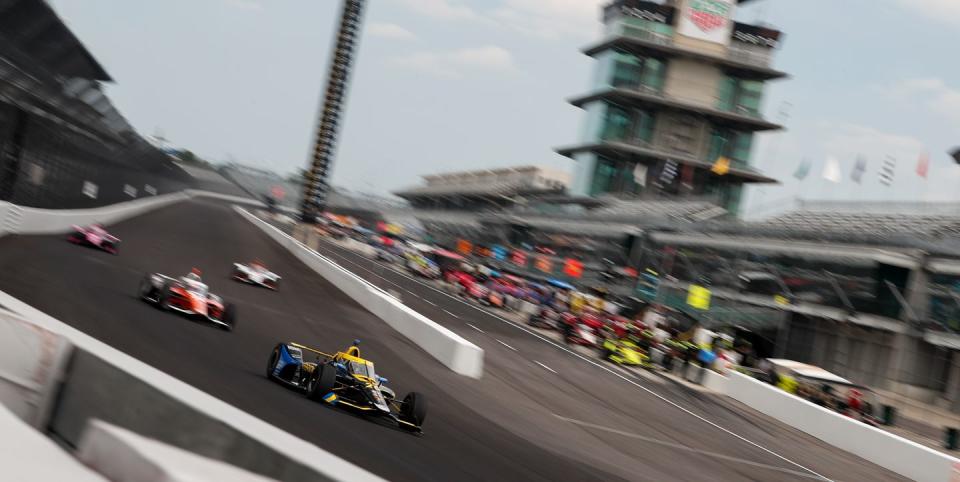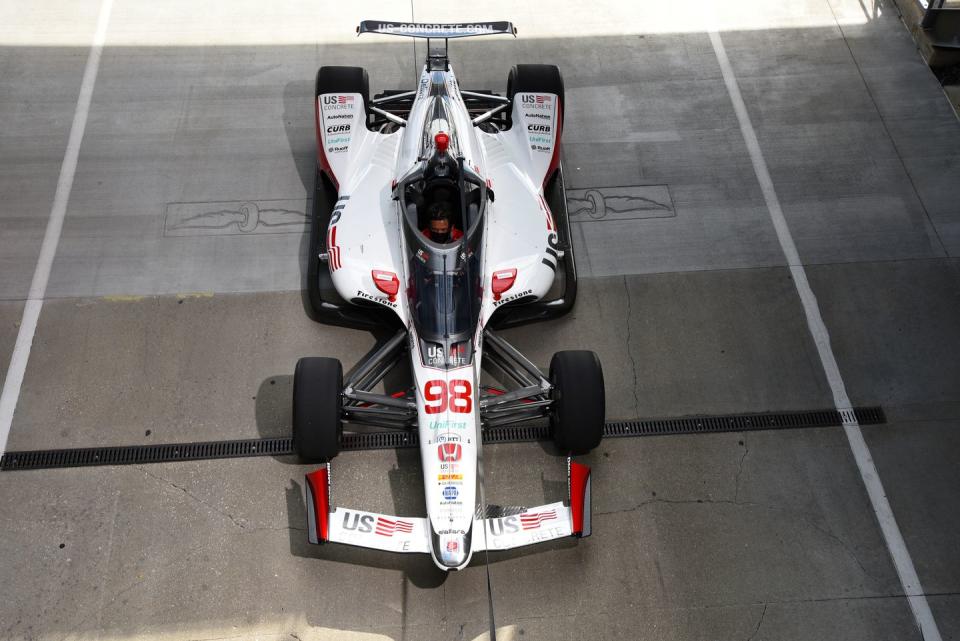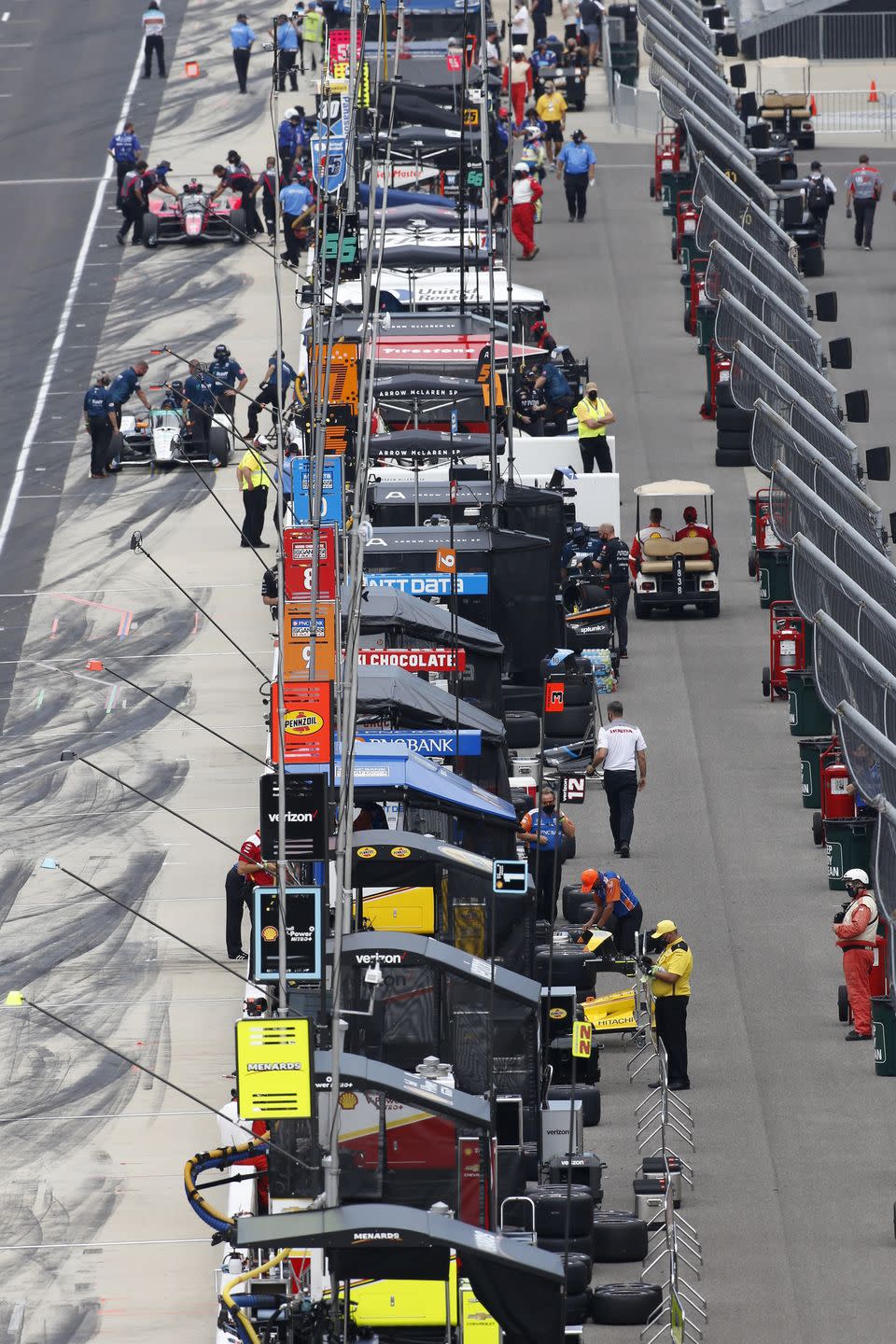The Indianapolis 500 is a Track Position Race Again

This isn’t the DW12 era of the Indianapolis 500 anymore.
After a five-year stretch from 2012-2016 where it was nearly impossible to stay out front, lead changes are once again trending downwards in the Greatest Spectacle in Racing and at least one former winner expects it to be the most-prominent track position race of his 13-year tenure.
"I think it's going to be more of a track position race than I've ever seen before," Ryan Hunter-Reay told Autoweek on Friday. "The passes are going to be tough to come by, but we'll see."
Hunter-Reay earned a Baby Borg Warner in 2014, the third of that five race stretch where passing expectations were completely rewritten.
The 2012 race set a new lead change record with 34, breaking the mark of 30 set back in 1960, and the most since 2005 (27). The following year far surpassed that mark with 68. The next two years set marks of 34 and 37.
That era ended in 2016 with 54 lead changes and began tapering off as that high downforce body style was phased out, first with the dual aero kits and then the universal aero kit, which eliminated the rear wheel guards responsible for an exaggerated slip stream.
This year, Hunter-Reay does not anticipate anything resembling DW12 racing but left himself an out.
"Now, we've said that before at certain tracks, but everyone trims out and it's passing everywhere so we'll see," Hunter-Reay said.
Conor Daly will make his seventh start next Sunday and shared Hunter-Reay’s assessment.
"I’m not going to beat around the bush," Daly said. "It’s not easy to pass. I’ve only seen a couple of cars able to do it so realistically, the goal is to be less-worse than everyone else, and the most comfortable getting a run and what you do with someone else’s mistakes."
Adds Marco Andretti: "Race pace is only as fast as the car ahead of you. It seems when you're more than two cars back, it's really hard to pass."

To that end, Andretti is in the best spot as the pole sitter, as he will be able to control the early pace of the race. He also has the first pit stall by virtue of his Saturday fastest qualifying time.
"It's more track position, like I said earlier," Andretti said. "It's going to be tougher to pass than in years past. I don't know. It's track position. We're going to have to execute on everything else other than just staying up front.
Will Power and Simon Pagenaud have won the past two races from the front row, from third and first respectively. That wasn’t the case during the DW12 era when not a single race was won from inside the first three rows.
2012: Dario Franchitti started 16th
2013: Tony Kanaan started 12th
2014: Ryan Hunter-Reay started 19th
2015: Juan Pablo Montoya started 19th
2016: Alexander Rossi started 11th
"This is going to be a pit strategy race," Daly said. "It is going to be a track position race for sure. So, you have to qualify well. This weekend is really important."
New for the 2020 season is the protective aeroscreen, generating rave reviews for its safety contributions, but also creating even more turbulence the further back a car is from clean air at the front of the field.
With the DW12, cars were completing passes on the straights, something that's no longer viable with today's configuration.
"That effect that allows you to suck up to another car is a big hole in the air, right," Hunter-Reay said. "But once you get to the corner, when you still need that hole and the grip, it’s gone."
Power expects a race similar to the one he won in 2018, where the leaders can exchange the front position several times early into a run, until tires fades over a longer stint.

"I think it will be very similar to the past years where the top two or three will battle it out at the end back and forth, then the tires will degrade a bit," Power said. "I think the leader would have a chance of maybe holding someone off like halfway through a stint.
"Just depends. If there's a late restart, it will be a pretty aggressive race like it was last year. Every year, once you're about three or four cars back, you have to rely on a car to drop off, balance go off or something, to pass them, otherwise it just happens during strategy, pit stop sequences, restarts."
Rossi says drivers will have to make some bold decisions if they are further away from the front because the expectation is the contending drivers will need to be near the top-five come the final stint -- whenever that begins.
"I think there will be passing for the lead because the leader doesn’t have a tow, but further back, you’re going to have to make moves you wouldn’t have made before," Rossi said. "It used to be you could back off because you’ll have other chances.
"But now, if you get a run, you’re going to have to do something with it, and be like ‘sorry, but I’ve got to go.’ That’s where the drama will be. That and there will be passing for the lead."
Rossi and Pagenaud had a thrilling battle for the lead off a restart with 14 laps to go last May. Rossi took the lead from Pagenaud with three laps remaining with Takuma Sato just behind them. Pagenaud retook the lead the next lap and held off the 2016 winner on the final lap.
Power overcame a pit road penalty and was able to race his way back up to fifth, proving that passing is possible with an elite car.
So, there should be a battle up front, but the challenge, says Daly is how challenging it's going to be get and stay there. Without the slipstream from the previous cars, and the increased wake from the aeroscreen, he just wishes there was something to add to the car to compensate for it.
IndyCar president Jay Frye feels confident that the race will be aesthetically enjoyable but also believes overtaking shouldn't be as easy as it came in the early parts of the last decade.
"First of all, passing is supposed to be hard, right? It's supposed to be a hard thing to do. That's a good thing," Frye said. "Yeah, I think the other day practice was really interesting. The race is starting a couple hours later than we normally do. We're a few months later than we normally are. Even shade on the track, different things going on, hot, sunny day. The track shaded differently than it would in May.
"We practiced basically the same time as we are going to race on Sunday afternoon. We were very encouraged by what we saw in practice."
Daly says this car will become more amenable to passing once it gets additional oval races under it, and maybe now that they have more practice with it, but he also wishes they could install something to help.
"IndyCar surely wanted to do more testing before everything got canceled," Daly said. "It's going to be tough to pass, man. And I wish we could put something on these cars to just make them race a little bit better, but it is what it is. We're going to build on this knowledge and make the racing better in 2021."

